A recent Twitter thread highlighted a popular Gamer™ belief:
Nope, they are mostly used to obfuscate real prices and can’t store value
— Nicola Visonà (@VisonaNicola) May 25, 2021
Even within gaming studios, I encounter a similar sentiment. Proponents of this position claim “firms use virtual currency pricing as a behavioral trick!” With virtual currency, there’s a disconnect between the real-world price and the virtual currency (VC) price. While true, there’s no intentional trickery going on. Instead, the reasons for VC are quite straightforward:
- Improve Payment UX
- Forgo First Party SKU Certification
- Avoid Fixed Credit Card Fee
Improve Payment UX
The huge transaction volume of a given player unpins all three reasons. A spender might transact hard currency 10-20 times in a single day, and certainly more over a lifetime. The first-party payment flow is expensive, a customer must enter a passcode or update payment details for each transaction. Additionally, the customer receives a separate email receipt for every transaction. The first-party flow is obtuse and cumbersome, disconnecting the player from the game UX. And the cost continues to grow as the number of transactions grows.
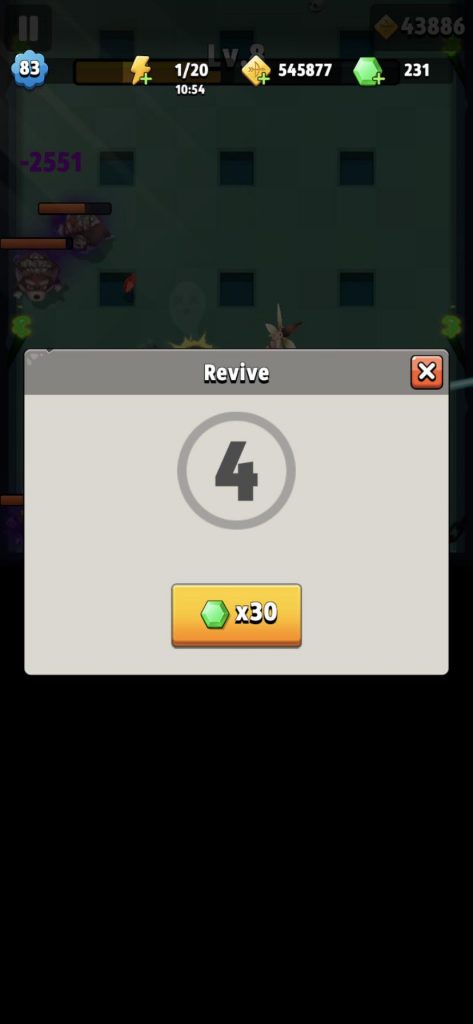
Forgo First Party SKU Certification
First-party platforms like Xbox, App Store, Steam, etc require separate listings for each new SKU. And for each new SKU, first parties independently QA the SKU for critical bugs. Again, having to do this for every item priced HC is unreasonable. This could mean thousands of listings and QA submissions. These platforms also limit the number of SKUs, with the App Store having a ceiling of 10,000 SKUs. Roblox alone has 40 MILLION games, they can’t all submit first-party SKUs. Instead, the Robux system ensures only a couple of SKUs are required.
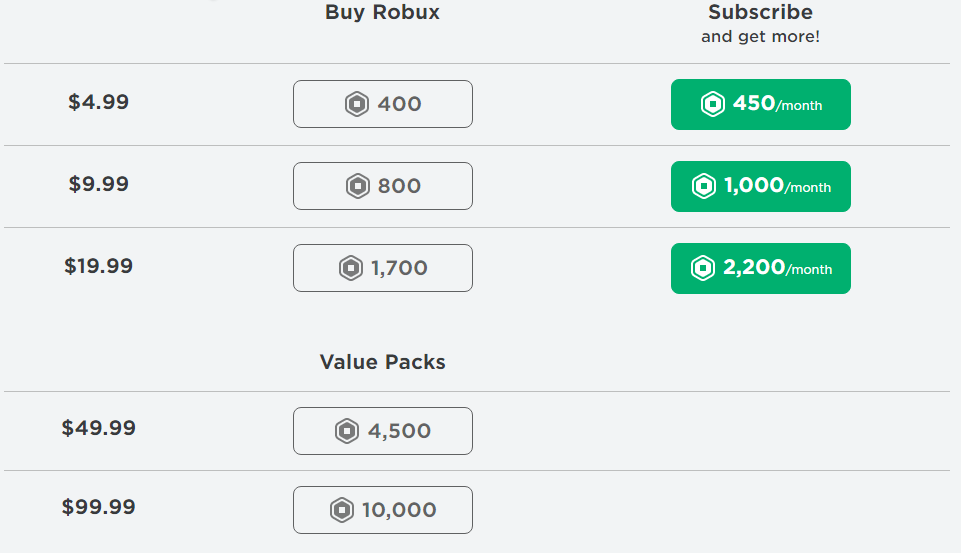
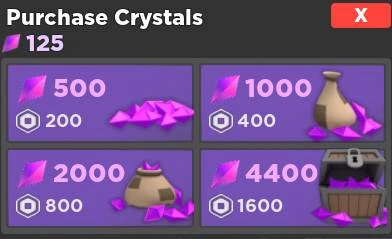
Avoid Fixed Credit Card Fees
Credit cards charge both a fixed and variable fee for each transaction. The fixed fee hovers around $0.10 per transaction, while the variable free hovers around 1.2%.

It’s even higher for Paypal and Square.

Consider a large spender making 50 transactions per day at $0.10 per transaction and playing for 200 days ($5 a day, $1000 LTV). In this case, 100% of the LTV goes to transaction fees, the developer doesn’t break even on a gross margin basis! Combined with the 30% platform tax, a first-party-only transactions model would set an effective floor at $0.10.
“Well, Why Not Make VC to Real World Money Exchange Equal?”
Developers try too! Many games peg their base SKU at $1 USD to 100 HC. But developers also like to pass bulk savings onto players, so they discount at higher purchase amounts.
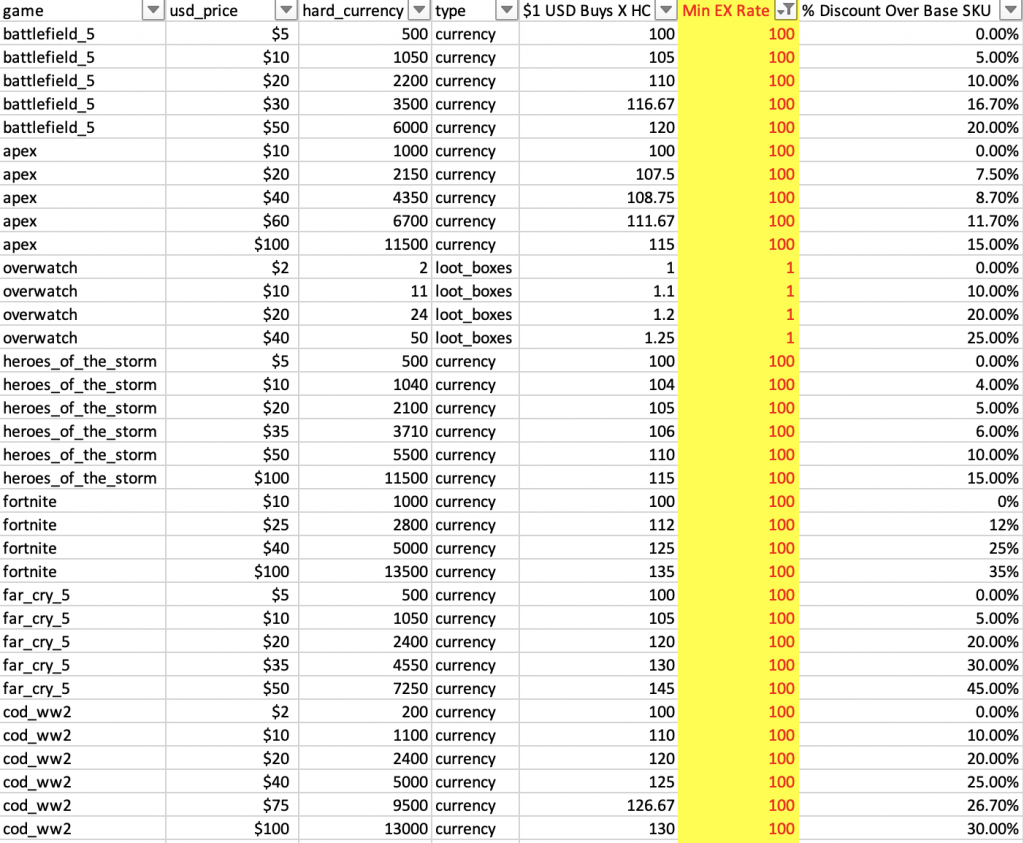
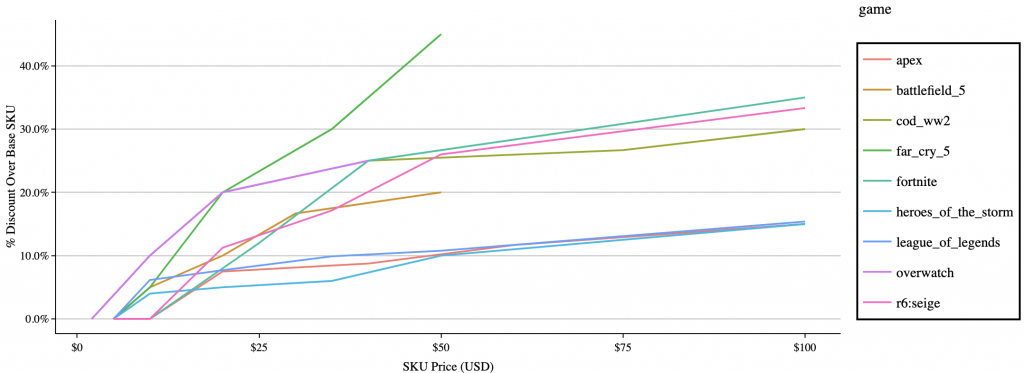
Don’t forget that the entire world doesn’t run on USD. Pegging at nice, round multiples in one currency guarantees it won’t be the same in other currencies; exchange rates are not equal.
Virtual currency isn’t some nefarious behavioral economics trick. On the contrary, it’s a pro-player! For a look at why multiple virtual currencies exist within a given game see Optimal Area Currency with Milton. This is one of the ideas that inspired the creation of the blog five years ago!